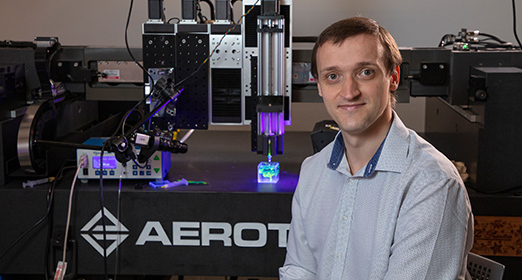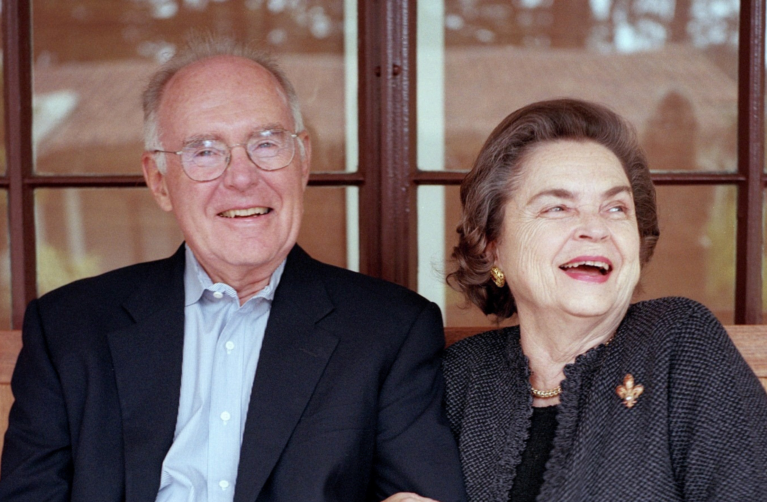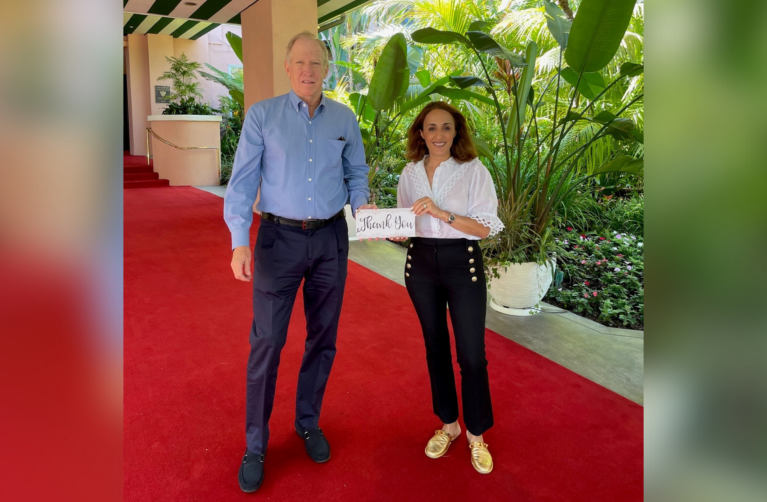Mark Skylar-Scott, PhD, joins BASE, Stanford’s new multidisciplinary initiative to cure congenital heart defects.
It’s a futuristic 3D printing system—one of only two in the world—and it’s too heavy for an upper floor.
Despite the lack of daylight, Skylar-Scott and his team couldn’t be more excited to be there, on a path to a medical breakthrough so transformational it sounds like science fiction: bioprinting living replacement parts to repair the hearts of babies born with congenital heart disease.
Born to be an engineer
Long before becoming an assistant professor of bioengineering at Stanford, Skylar-Scott grew up in the steel-making center of England, a city called Sheffield, where his dad was a mechanical engineer.
“As a teenager,” he says, “I was really interested in using mechanical engineering principles to understand living things and biology—questions like: Why aren’t there any land animals bigger than blue whales? There are simple engineering principles behind why that could never work.”
At that young age, Skylar-Scott already knew he wanted a career using engineering skills to make advances in biology and health care. As an undergraduate at Cambridge University, he spent a year at the Massachusetts Institute of Technology (MIT) to explore bioengineering.
He was hooked.
After completing college, Skylar-Scott returned to MIT to pursue his PhD, where he used laser-printing techniques to create small biological tissues. But for the tissues to be medically useful, Skylar-Scott had to find a way to keep large and thick tissues alive—with three-dimensional blood vessels and vascular networks to provide nutrients and oxygen—just like human tissues.
As a postdoc at Harvard, he succeeded. Using a first-of-its-kind 3D bioprinting system, he produced living tissue one centimeter thick, with its own network of blood vessels to keep it alive. It was a groundbreaking development on the path to creating therapeutically functional tissues.
A focus on babies born with heart defects
Congenital heart defects (CHDs) are the most common of all birth defects. Three out of 10 babies born with a CHD won’t survive to age 18—even if they receive the best available care.
While surgery can provide a life-saving fix, it’s often not a lifelong cure. “It became clear to me,” Skylar-Scott says, “that the most effective way to make an impact with 3D bioprinting technology was to move into the cardiac space.”
“We have reached the limit of what we can do with surgery and conventional tools,” explains Frank Hanley, MD, chief of Pediatric Cardiac Surgery in the Betty Irene Moore Children’s Heart Center and the Lawrence Crowley, MD, Endowed Professor in Child Health. “We need to move beyond treating and managing children’s heart disease to eliminating it.”
Bioprinting and implanting healthy tissues that can grow along with the child will enable long-lasting repairs to damaged hearts, eliminating the need for the multiple surgeries that children with CHDs often endure. And 3D printing is the perfect technology to do it, since it’s able to produce three-dimensional, complex structures with the vascular networks that living heart tissues require.
Last July, Skylar-Scott joined Stanford’s multidisciplinary BASE (Basic Science and Engineering) team of physicians, scientists, and engineers who are working jointly toward one audacious vision: to cure congenital heart disease.
“The time is now. Breakthroughs in gene editing, informatics, and bioengineering are propelling us forward with bold new initiatives that we will drive straight to the clinic,” says Marlene Rabinovitch, MD, director of BASE and the Dwight and Vera Dunlevie Professor in Pediatric Cardiology.
It’s easy to see why Skylar-Scott is inspired by the prospect of providing a long and healthy lifespan to babies who might not otherwise survive. And since the birth of his own baby boy, now just over a year old, he takes it more personally.
“When I see a sick child in the cardiac intensive care unit, I can’t help but think of how lucky we are to have a healthy child,” he says. “Not everyone has that same start in life. But everyone should.”
This article originally appeared in the Summer 2021 issue of Packard Children’s News.




